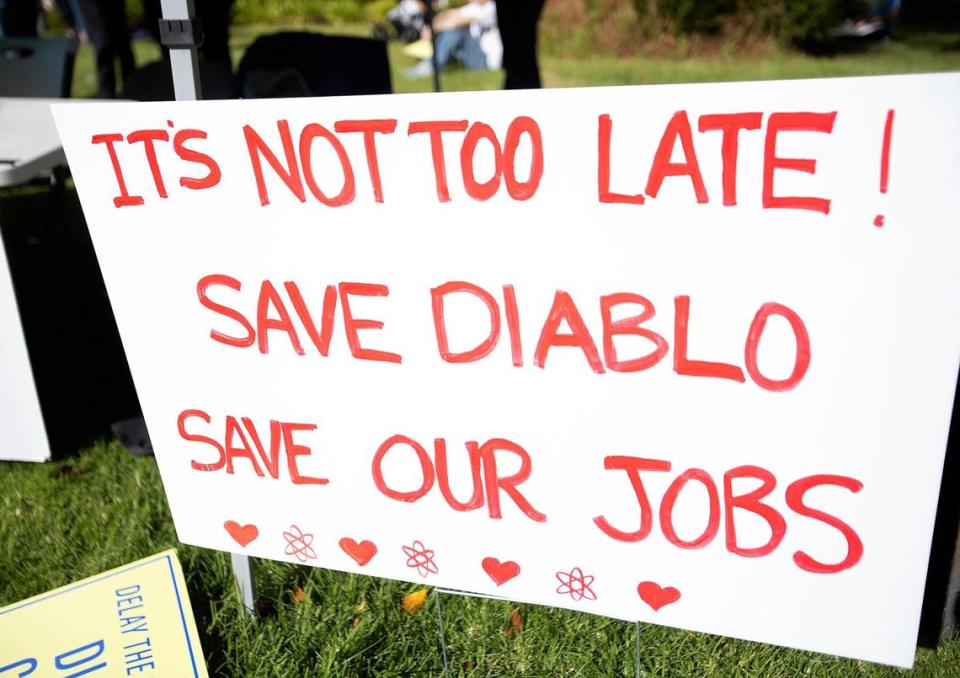The real reason Diablo Canyon may stay open? A complete lack of state leadership
California lawmakers could soon agree to extend the life of the Diablo Canyon nuclear power plant for 10 years — a direct consequence of the state’s abysmal failure to adequately plan for our energy future.
No matter where you stand on nuclear energy, it’s impossible to overlook the fact that, despite having several years of notice, the state did not move quickly enough to replace electricity from Diablo, as well as from other power plants slated to retire.
Now state officials are telling us we won’t have enough energy to keep the lights on unless we take extraordinary measures, though there are plenty of independent energy experts who strongly disagree.
Leaders of state energy agencies are giving us a variety of excuses for this turn of events:
Increased demand for electricity.
A prolonged drought that’s reduced the supply of hydroelectric power.
Most of all, the “uncertainties” of climate change.
Uncertainties? Shouldn’t state officials have been planning for worst-case scenarios for years, if not decades?
Instead, we have hastily written legislation to not only to extend the life of Diablo Canyon, but also to allow for the continued operation, if necessary, of four gas-fired plants on the Southern California coast.
The Diablo Canyon bill, which legislators are expected to vote on before they recess on Aug. 31, offers several perks to PG&E.
Those include a $1.4 billion “forgivable loan” (the utility will not have to repay “eligible costs”); an exemption that will it allow it to continue using an environmentally harmful once-through cooling system; and elimination of some environmental reviews, though PG&E will still be required to apply for a federal license from the Nuclear Regulatory Commission.
There is plenty of blame to go around for this state of affairs, starting with the California Public Utiilities Commission.
It waited until 2021 to order utilities to secure 11,500 megawatts of clean energy — five years after PG&E announced it would close Diablo in 2024-25.

Supply-chain issues could make bad situation worse
Adding to the gloomy outlook, supply-chain issues and raw material shortages could make it difficult to complete solar, wind and other projects needed to meet clean energy goals.
According to state officials who spoke at a recent Diablo Canyon workshop, the best-case scenario is a shortfall of 1,800 megawatts after Diablo closes, and that could be even more severe if clean-energy projects are delayed
They believe it’s still possible for California to meet its goal of 100% clean energy by 2045, but another less-publicized goal is in jeopardy: limiting major outages caused by an insufficient supply of power to no more than one every 10 years.
The last such outage occurred in August 2020 and drew an angry response from Newsom.
“I am not pleased with what’s happened,” he said then. “You shouldn’t be pleased with the moment that we’re in in the state of California.”
Imagine the political embarrassment should that scenario repeat itself just a few years later.

Vague promises but few answers
Is it any wonder, then, that the governor has so dramatically changed course and is now willing to prop up Diablo Canyon?
At the same time, the Newsom administration is offering assurances to those opposing an extension for Diablo.
“The extension needs to be as short as possible,” the governor’s cabinet secretary, Ana Matosantos, said at the Aug. 12 Diablo workshop. “Safety is first and it has to be safe. ... And we need to be doing the critical work that is necessary to ensure that any date that is established is a date that is adhered to.”
That was echoed by state Sen. John Laird, whose district includes the nuclear power plant.
“The key reason for this discussion today about the unexpected continuation of Diablo Canyon is inadequate planning. We can’t afford to make this mistake again,” he said.
“We must use the time provided by that extension to come up with a Marshall Plan to move us toward the state’s ambitious goal of zero carbon electricity by 2045,” he said, referring to the plan that provided financial aid to Europe to rebuild following World War II.
In other words, we’re getting promises but not a lot of answers to questions like these:
What will the continued operation of Diablo Canyon mean for ratepayers?
Will extending the plant’s life reduce the urgency to develop renewable energy projects, leading to another cycle of reliance on nuclear over wind, solar and battery storage?
In particular, will it stall plans for offshore wind development off the coast of Morro Bay?
We’re hearing a lot about deferred maintenance — what will it take to get the plant ready to operate for a dozen more years?
If the goal is the shortest possible extension, why 10 years instead of the three to five that were initially discussed?
If nuclear power is indeed key to ending our dependence on fossil fuels, why isn’t California reconsidering its moratorium on new plants, rather than relying solely on an aging facility located near multiple earthquake faults?
And last but not least, how will energy officials be held accountable for ensuring the transition to carbon-free energy stays on track? Will we actually get the “Marshall Plan” mentioned by Sen. Laird?
Bottom line: If the continued operation of Diablo Canyon truly is necessary for the environment and for health and safety reasons — rather than for political expediency — then it should happen.
Not only do we need to keep the lights on, we also must honor our commitment to reducing the greenhouse gas emissions that threaten the entire planet.
But far too much is at stake to trust California’s energy future to last-minute maneuvering that allows for the circumvention of existing rules and regulations.
This backtracking must be a one-off; there can be no more excuses for failure.

